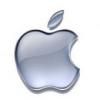-
Posts
10068 -
Joined
-
Last visited
-
Days Won
569
Content Type
Profiles
Articles, News and Tips
Forums
Everything posted by Hervé
-

Dell D820 Post Install No Network connectivity and not able to install EDP
Hervé replied to epic2015's topic in The Archive
If you mount your SL DVD, myHack should normally be able to use it to create the USB installer. Failing that, you'd need to create an image of the DVD that you'd then mount and use with myHack. You need to have an existing hack or a Mac to do that of course. Naturally, the alternative is to use ModCD that fully supports the direct use of a retail DVD. -
It seems you're confusing BIOS modes, installation parameters and vanilla installations. You should be able to use the config file I posted for the D630 in the sister thread. Whatever the optional parameters and BIOS modes, Clover always provides for a vanilla installation. Non-vanilla installations = distros.
-
What does the KP message say?
-
32bit or 64bit mode is just a kernel mode. It's selected through a single bootloader parameter arch=/.
-
Erm... no driver can make an LCD display a resolution higher than the pixels it actually possesses. Mind you, I once used on a D830 a tool in ML (the name of which eludes me now) that could run the display in a sort of interlaced mode at higher res than the LCD specs, but it was really crap. With an external display, provided the VGA or DVI output is supported on your E6410, you can do what you want within the specifications limits of the external screen or the VGA output.
- 4 replies
-
- resolution
- mavericks
-
(and 1 more)
Tagged with:
-
Follow my D630 guide, it'll be exactly the same. No need to edit your SMBIOS to MacPro5.1, Clover normally detects it as MacBookPro5.1.
-
Try without the "/" then, i.e. just type "legacy_kernel" as Chameleon option.
-
Watch the casing, it's critical -> /System/Library/Kernels/kernel. If you're booting with Chameleon, you may also copy the kernel file to the root of your HDD as "mach_kernel" and try to boot with option: /mach_kernel.
-
Turbo boost speeds depend on CPU load + number of cores used. 2.6GHz is the maximum turbo boost when only 1 core is active, the maximum turbo speed is slightly lower when multiple cores/threads are active. So yes, what you're seeing is normal. http://www.notebookcheck.net/Intel-Core-i5-4200U-Notebook-Processor.93563.0.html
-
It's been a while since my last ModCD installation so I can't remember if it replaces the vanilla kernel at the end of the installation or not but I believe it does not. Boot the ModCD, then choose your Snow Leopard HDD partition to try and boot your SL installation. That would normally boot SL with the legacy/AMD kernel. If you reach desktop (or 1st boot finalisation process), that will confirm that you need to copy the legacy/AMD kernel to your SL partition. I also suggest you use the verbose mode (-v Chameleon flag) so that you can tell us what error message might be displayed or where startup may hang.
-

Dell D820 Post Install No Network connectivity and not able to install EDP
Hervé replied to epic2015's topic in The Archive
Don't use a distro; use our recommended installation method: myHack + retail OS X + bootpack. For SL, you'll need to use myHack v3.1.2. -
There's a Wifi/Bluetooth sub-section in the R&D forum
-
ModCD uses Nawcom's legacy/AMD kernel by default. You need to copy that over to your HDD's SL installation, knowing that Nawcom made a legacy/AMD version for each specific Snow Leopard update. At present, all you have on your SL partition may be the standard/vanilla kernel which does not support any AMD CPU. Backup your vanilla kernel (found at HDD's root as mach_kernel) as /vanilla_kernel before you copy the legacy/AMD kernel as /mach_kernel to your HDD. Then reboot with -f flag to ignore cache and once at the SL desktop, open up a Terminal window to rebuild cache with command sudo touch /System/Library/Extensions. Wait a few minutes for the cache to rebuild. You should then be able to boot safely with full kext/kernel cache from there on. Update directly to 10.6.8 using Apple's combo update and remember to copy Nawcom's 10.6.8 legacy/AMD kernel before you reboot. You'll find all Nawcom's kernels with your friend Google. There are copies on this forum + links to Nawcom's repository too. Use the Search tool.
-

dell Latitude E6440, i5-4300M, HD4600, 1600x900, Mavericks
Hervé replied to malkev's topic in The Archive
Isn't the guide specific enough? You use myHack v3.3.1 + provided pack + Haswell-patched kernel, that's all. Once Mavericks is installed, remove AppleHPET kext and rebuild cache so that all USB ports work. -

dell Latitude E6440, i5-4300M, HD4600, 1600x900, Mavericks
Hervé replied to malkev's topic in The Archive
I'm surprised to read about you apparent memory-linked issues; I've not encountered that at all... Which Chameleon version are you using? The CPU speed is just a cosmetic matter and is probably due to the Chameleon version you're using. Later releases such as r2401 will show the nominal CPU speed (say 2.6GHz for a i5-4300M) when ealier releases such as r2377/r2395 will show the turbo speed (say 3.2/3.3GHz for a i5-4300M). This being said, it bears no influence whatsoever on the actual speed of the CPU or CPU throttling/speedstep. Regarding the Extra folder, yes you should install it with myHack->Create Extra. Alternatively, you can simply manually copy the files and follow-up with a myFix (quick). PS: we have model-specific support sections in the forum; ideally, that's where you should have posted this thread. -
The screen wake problem is a known issue that affects NVS 110M/120M-based Dell Latitude D models. Best workaround is to align it screen sleep with computer sleep to avoid black screen on screen wake. An "on the fly" fix consists of pressing Fn-ESC on screen wake to put computer to sleep and then wake the computer immediately. Screen then wakes properly.
-
That keyboard/mouse issue is usually due to the presence of a bluetooth adapter. The recommendation is to disable it initially in BIOS and only activate it when the OS has been fully installed. The BT setttings can then be configured not to look for a bluetooth keyboard & mouse.
-
Mmm, try this pack instead (different FakeSMC + PS2 kexts). Alternative_Extra_D820_Lion.zip
-
Check that your BIOS is properly configured. Refer to the D620 settings, they'll be more or less the same. You're trying to install 10.7.5 and I verified the pack I uploaded on my D620 nVidia. You could maybe check the Chameleon version you're using. You can safely update to version r2377 or r2395, they'll work just fine.
-
Unfortunately, the published D820 Lion bootpack is unsuitable: 64bit only FakeSMC, wrong SMBIOS plist, incorrect boot plist, missing and wrong kexts... Please use the attached pack to replace your existing /Extra. It contains everything you need (LAN, audio, battery, CPU Power management, full QE/CI, etc.) without further need of EDP tuning. Removed: Extra_D820_Lion-10.7.zip
-
Using the bootpack is the right way to go, but I'm pretty sure FakeSMC 6.8.1307 did not get released as a 32-bit or fat binary, so this would exclude the 32bit kernel mode required on the D820 to support graphics acceleration (there's not 64bit support for NVS 120M). Did you re-run myFix (quick) after replacing the FakeSMC kext? It's required... Boot with flags -f -v; that'll ignore the cache.
-
Seems your Hackintosh does not like the current FakeSMC (and associated plugins) version you're using. Which is it? For 32bit mode OS X versions on such "legacy" systems as your D820, our recommendation is to use Kozlek's 32/64bit FakeSMC v5.2.678. It works flawlessly and will support all the underlying hardware; there's no need for a more recent and fancier version. Look things up here.
-
MacBookPro8,1 is not really a good profile for a D series model such as the D830. Ideally, opt for MBP5,1 SMBIOS and you'll ensure your CPU SpeedStep + GPU throttling are optimised.
-
As usual, if you want support, you're going to have to be more specific. What are the specs, what did you do, what error message did you get, where does installation fail, etc. ?
-
Yosemite native/vanilla nVidia drivers work OOB for the integrated NVS 135M. There's no need for the CUDA driver as far as I know, in fact I do not even think that the CUDA driver supports the GeForce 8400M chip on which the NVS 135M is based. If you look at all the past CUDA drivers that listed specific supported chips, you'll see that from v3.1 of July 2010 to v5.0.45 of March 2013, the only supported chips of the 8M Series were 8800M and 8600M. GeForce 8400M was never listed as a CUDA-supported model.

